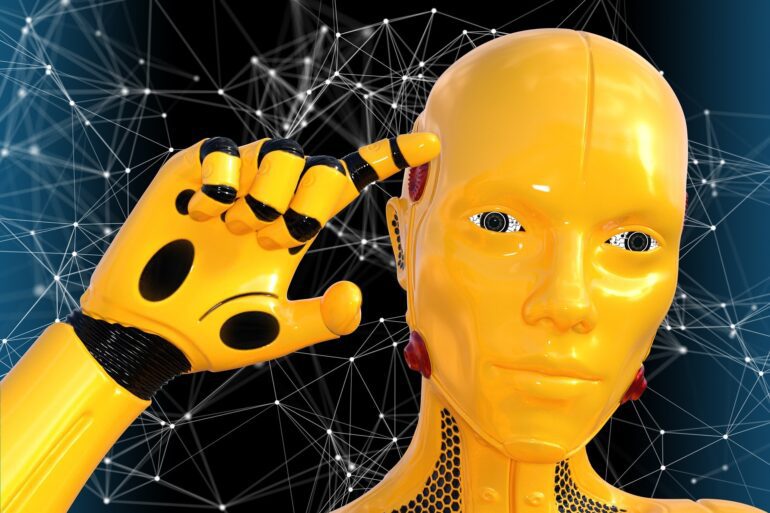TL;DR:
- The global artificial intelligence and robotics in the aerospace and defense market is projected to reach over $35,848.1 million with a CAGR of 7.9% by 2031.
- The COVID-19 pandemic had a negative impact on the market, but investments in AI technology for passenger activities at airports are expected to drive market growth.
- A significant rise in the need for artificial intelligence and robotics in aerospace and defense is boosting market growth.
- Technological advancements allow for performing complex tasks with a single click, increasing the success rate of projects utilizing AI and robotics.
- Changing business partnerships between aircraft manufacturers and suppliers may hinder market growth.
- The software sub-segment is expected to have the largest market share due to the adoption of AI-enabled technologies.
- The military sub-segment is predicted to grow rapidly, driven by increased military R&D budget expenditures and investments in AI and robotics.
- The Asia-Pacific region is projected to observe significant market growth, particularly in defense applications.
- Key players in the market include IBM Corporation, Airbus SE, GE Aviation, Boeing Company, Thales Group, Intel Corporation, Lockheed Martin Corporation, Raytheon Technologies Corporation, Microsoft Corporation, and General Dynamics Corporation.
- These players are investing in product launches, strategic alliances, and collaborations to maintain a leading edge in the market.
Main AI News:
The global market for artificial intelligence and robotics in the aerospace and defense industry is expected to see impressive growth, reaching over $35,848.1 million, with a CAGR of 7.9% by 2031, according to a new report by Research Dive.
The report provides a comprehensive analysis of the market’s current and future state, outlining key characteristics such as growth drivers, growth opportunities, limitations, and developments in the forecast period. Furthermore, the report presents the required market statistics to provide new players with an understanding of the global market’s current status.
Although the COVID-19 pandemic had a significant negative impact on the market’s growth, the report suggests that many airlines and airport authorities have invested in AI technology to improve passenger safety and efficiency during the epidemic. This factor is expected to fuel the market’s growth in the coming years.
The need for AI and robotics in aerospace and defense is one of the main drivers of the market’s growth. In addition, technological advancements in AI and robotics have made it possible to perform complicated tasks with a single click, while the success rate of projects utilizing these technologies is expected to unlock lucrative opportunities for market growth in the forecast period. However, the market’s growth is anticipated to be hindered by the changing business partnerships between aircraft manufacturers and their suppliers.
The report segments the global market into type, application, and region, with the software sub-segment expected to have the largest share of the market due to the robust software that helps boost the adoption of AI-enabled technologies. Additionally, the military sub-segment of the application segment is predicted to grow rapidly in the forecast period, owing to increasing military R&D budget expenditures, the purchase of AI-based technology, and growing investments in the development and integration of robotics and AI.
The Asia-Pacific market is projected to see significant growth in the estimated period, with AI being used for defense applications such as military deductions, command, and decision-making support, defense equipment, and other uses in the region. The report states some of the leading players operating in the market, including IBM Corporation, Airbus SE, GE Aviation, Boeing Company, Thales Group, Intel Corporation, Lockheed Martin Corporation, Raytheon Technologies Corporation, Microsoft Corporation, and General Dynamics Corporation. These players are taking various initiatives, such as investing in novel product launches, strategic alliances, and collaborations, to maintain their leading edge in the global market.
As an example, in March 2021, HamiltonJet and Sea Machines Partner launched an integrated pilot-assist system that uses computer vision and autonomous command and control technology for waterjet propulsion systems. The report also provides industry insights such as top strategic initiatives & developments, the novel launch of products, business performance, Porter’s five forces analysis, and SWOT analysis of the foremost players operating in the global market.
Conlcusion:
The global artificial intelligence and robotics market in the aerospace and defense industry is poised for significant growth in the coming years. Despite the setbacks caused by the COVID-19 pandemic, investments in AI technology and the increasing need for AI and robotics in the aerospace and defense sector are expected to drive market expansion. Technological advancements enabling streamlined processes and higher project success rates further contribute to market opportunities.
However, it is crucial to address the evolving dynamics of business partnerships between aircraft manufacturers and suppliers to sustain growth. Moreover, the software and military sub-segments show promising potential for market dominance. The Asia-Pacific region is projected to experience substantial growth, driven by the adoption of AI in defense applications.
The presence of key players and their strategic initiatives position them at the forefront of this evolving market. Overall, the market’s future looks promising as organizations continue to embrace AI and robotics to enhance safety, efficiency, and innovation in the aerospace and defense sector.

